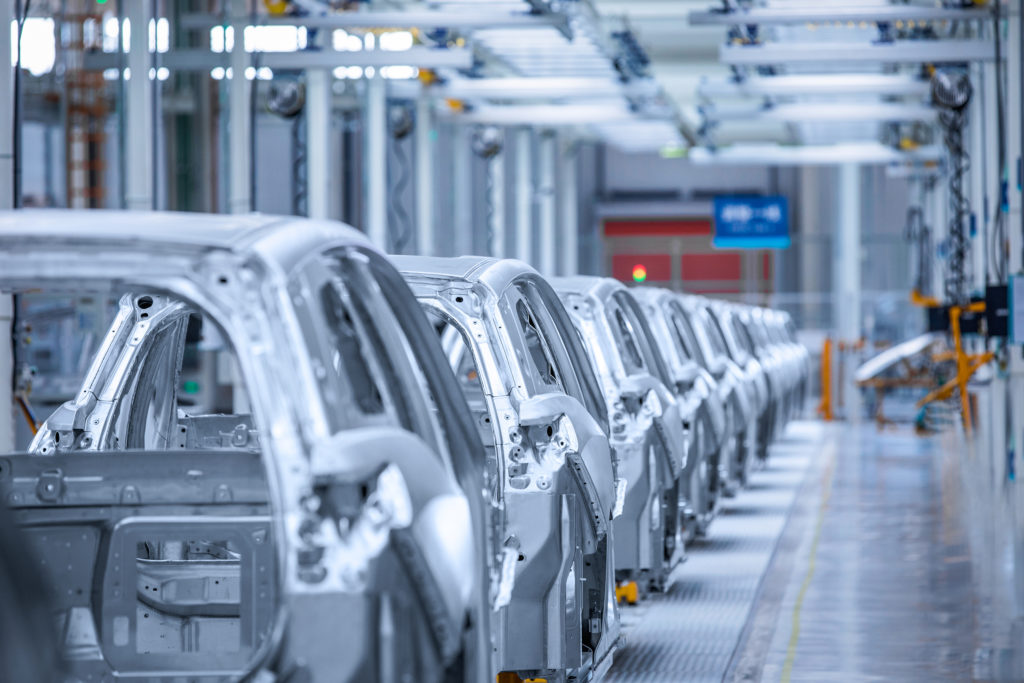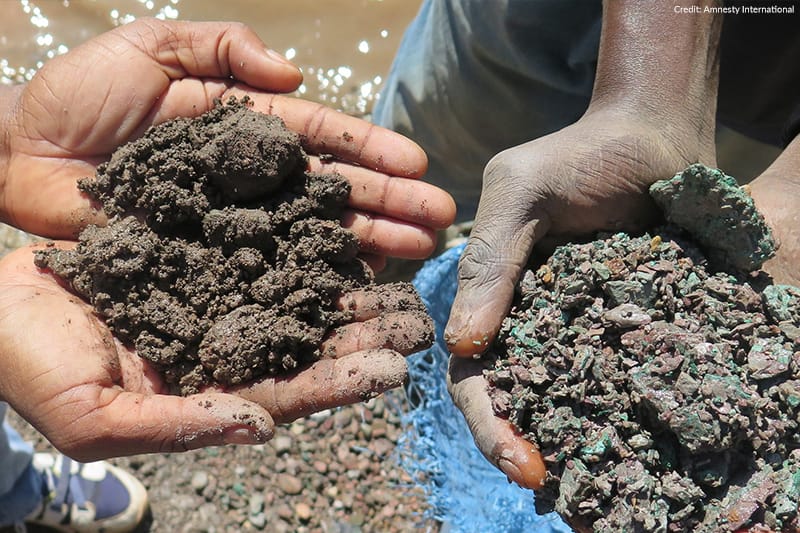Over the next 20 years it is projected that there will be somewhere between 300 and 500 million electric vehicles (EVs) on the road. That total would constitute a staggering leap from the roughly five million new models sold in 2018. For passenger car powertrains, the long-promised future of clean transportation is now.
However, close scrutiny of the EV power unit supply chain, and particularly the raw materials used to build EV batteries, reveals unappreciated costs. These are costs that suggest this future might be neither as clean nor as reliable as has been suggested, and that it might even come with unprecedented human rights infringements. Issues also manifest in supply chain security risks—a layer of concern that is not being discussed, let alone addressed, in the EV context.
The hidden risks with these power sources begin at their upstream origins. The hundreds of millions of new EVs to hit public roads will be powered by batteries, which rely, at least in the immediate future, on lithium-ion variants. Lithium-ion batteries operate by virtue of an anode made of graphite and a cathode made of varying combinations of cobalt, nickel, manganese, and several other alternatives. Nickel-manganese-cobalt batteries dominate the market at present; Tesla uses a lithium-nickel-cobalt-aluminium chemistry and is working on a set of cobalt-free or -reduced batteries drawing on lithium-iron phosphate technology and chemistries that rely more heavily on nickel.

Where do these minerals come from? Lithium is concentrated in Argentina, Bolivia, and Chile. The Democratic Republic of the Congo (DRC) is the world’s dominant source of cobalt. Mineral extraction in these locales is rife with environmental degradation and human rights abuses. DRC cobalt extraction and processing paints a stark picture: by some estimates there are more than 40,000 children put to work in the DRC’s artisanal cobalt mines with little concern for occupational safety, let alone the illegality of child labour. In Chile, lithium mining, a water-intensive business, has crowded out the agricultural sector and contributed to increased soil contamination.
But environmental and human rights concerns are just the first order of risks in the underlying EV battery recipe. The necessary raw materials are disproportionately concentrated in a small set of markets, most of them emerging. And the extraction and processing of these minerals is overwhelmingly controlled by one single actor: China. Thanks to industrial policy, Chinese companies dominate, at home and abroad, the harvesting and processing of the critical raw materials necessary for EV production. They do so propped up by state subsidies, responding to Beijing’s ambitions to control the EV supply chain and wider industry. Concentrated supply and concentrated upstream consumption introduce significant EV supply chain security risks.
The DRC’s role in the cobalt supply chain neatly demonstrates the threat. It is the largest global producer of cobalt, accounting for approximately 60% of world totals. DRC cobalt resources are disproportionately invested in and mined by Chinese firms backed by the Chinese Communist Party (CCP). In 2018, China accounted for more than 85% of the DRC’s cobalt ore and concentrate exports, by value. Chinese companies own or invest in entities that own at least 12 of the DRC’s mines with cobalt reserves. All but one of those Chinese companies is state-owned. Chinese companies also invest in the processing of the DRC’s cobalt and in integrated supply chains around it.

Some are controlled by a single company; state-owned China Nonferrous Metal Mining Group Co. has established a broad network of leach plants and smelters, as well as a mineral research and development centre, in the DRC. Other supply chains leverage strategic alliances and offtake agreements among different Chinese players: Chinese-domiciled Jinchuan Group sells the cobalt hydroxide produced at its Ruashi mine in the DRC to its own operations and its affiliates: the oxide ore produced at its Musonoi copper-cobalt mine goes to a smelter built and operated by Chinese-domiciled Chengtun Mining.
Such vertical integration does not stop at the raw materials. China’s battery makers enjoy preferential treatment in the growing Chinese domestic automotive market. They are increasingly the preferred vendor for US, Japanese, and European automakers as well. For example, China’s Contemporary Amperex Technology Co. (CATL) supplies BMW, Volkswagen, Toyota, and Honda.
China also uses investments and strategic partnerships to extend its integration to foreign players. Chinese state and corporate actors have established control over, influence on, and access to many of the most promising EV start-ups. Lucid Motors, for example, counts Chinese state-owned Beijing Automotive Group (BAIC) and the state-backed funds of Tsing Capital among its earliest financial backers. Rimac, one of Porsche’s bets in the EV space, has also received investment from China’s Camel Group.

Why does this concentrated supply control and influence matter? First, it introduces a single point of failure at which supply chain disruptions could be magnified and generate ripple effects with little forewarning. The COVID-19 era has demonstrated the risks of unilateral dependence and a lack of resiliency in globalised supply chains. And China has been known to use supply chain dominance for coercive ends. And in a global game, concentration affords a single actor—in this case China—informational advantages that may support non-market and anti-competitive behaviours. For example, could Ford expect to negotiate in good faith, in competition with Nio, for access to critical raw materials controlled by Chinese concerns that enjoy the same CCP state-backing as Nio?
Indeed, corresponding environmental and human rights concerns have motivated broad efforts to reduce the role of tainted materials in EV batteries. Technological advances may shift the materials landscape. For example, silicon inputs could replace graphite as the anode source on lithium-ion batteries. Cathode innovation, such as Tesla’s efforts to reduce cobalt in its batteries, offers another path toward improved environmental marks.
But those shifts are unlikely to change China’s control. Beijing also dominates related industrial sectors, like polysilicon, the upstream input used in the solar panel supply chain. It therefore may be premature to expect technological breakthroughs to solve supply chain risks. Moreover, China’s omnipresence in the technological landscape may allow it the influence necessary to preserve control: CATL, China’s largest EV battery maker, is a key technology partner in Tesla’s latest plans, including specifically in the lithium-ion phosphate approach.
The internal combustion engine and its gasoline burning profile may be on the out, but the future being ushered in should be made clear. Those calling the shots in Detroit and Stuttgart, and determining regulations in Washington and Brussels, should broaden their aperture before offering rosy promises.
Nathan Picarsic is Founder and Chief Executive of US-based strategy consultancy Horizon Advisory


